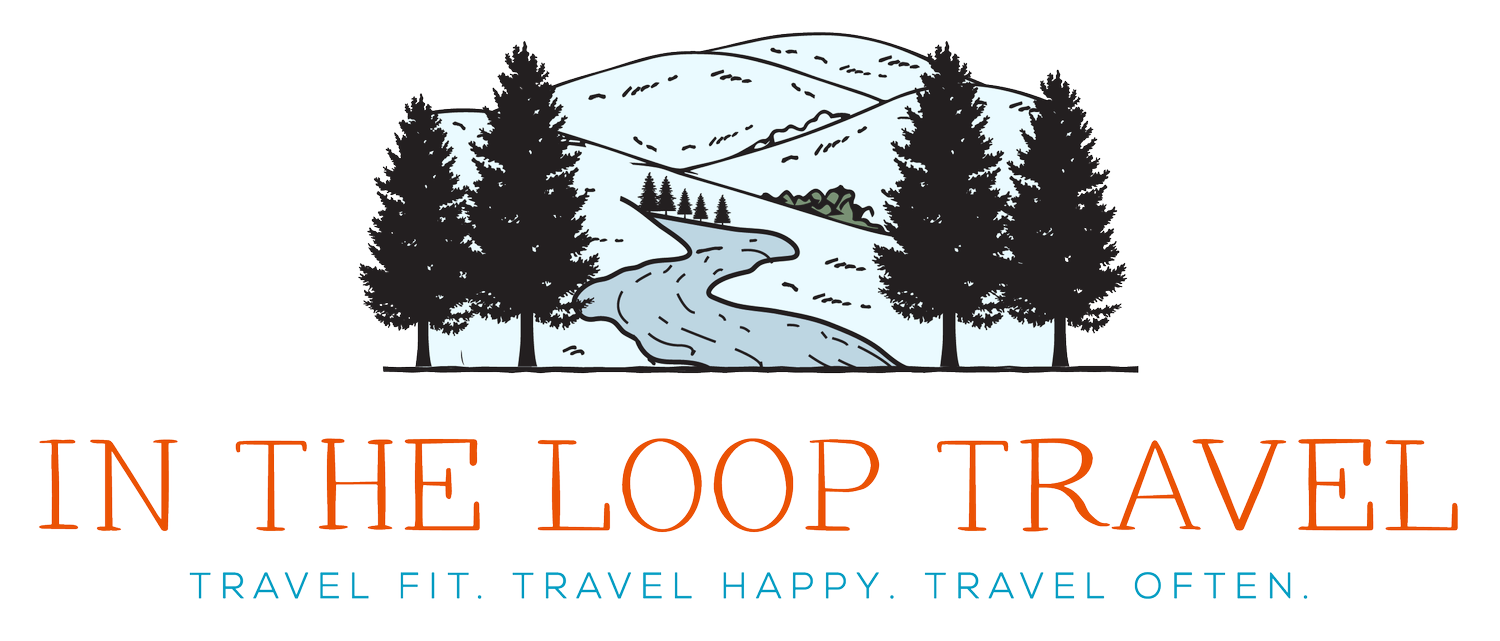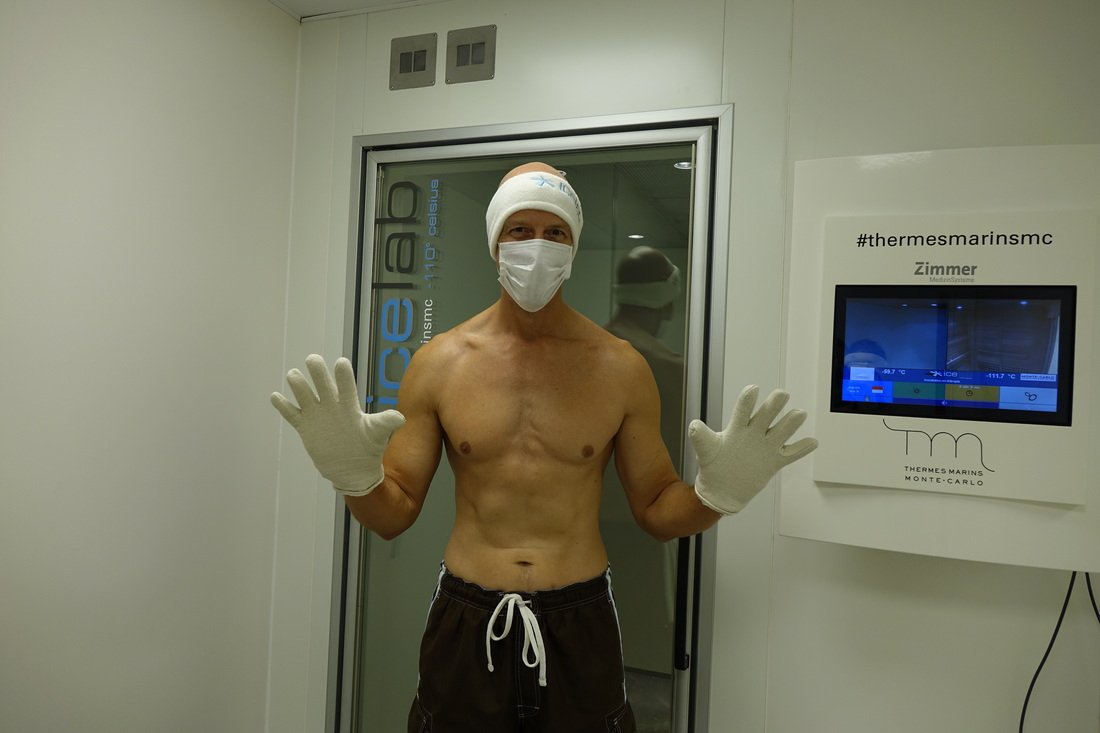I Tried Cryotherapy in Monte Carlo. Here’s What It’s Like.
Here I am, outfitted and about to enter the chamber for my two minutes of suffering.
I'm trying to regulate my breathing and make it to the recommended two-minute mark.
But the back of my bald head feels as if it will crack and fall off at any moment — and I've just surpassed the 60-second barrier. I peek over to my wife, and her stoic and concentrated stare gives no indication that she is suffering as I am.
This spa day in Monte Carlo isn't exactly what I had expected when I was told we had been invited to review the luxurius Thermes Marins facility that rises above the harbor and sits adjacent to the yacht club.
I should have known something was up when they had to put tape over my nipples.
Welcome to the world of cryotherapy!
Colleen and I showed up at Thermes Marin in Monte Carlo thinking we would be enjoying a nice massage. Instead, we experienced something far more interesting, if a bit scary at first.
Cryotherapy uses extreme cold to recycle the blood in a bid to alleviate ailments like inflammation or help flush out toxins and generate an overall better feeling. The treatment also is used by athletes to enhance sports performance, therapy department manager Christophe Fautrier told me.
Here is what happens.
We were told to strip down and get into our swimsuits. We had to cover any exposed metal (jewelry, piercings). We got gloves, socks, a face mask and ear covering to protect our extremities. Christophe added the tape to my nipples right before I entered, remembering at the last instant and saying it was just an extra precaution.
After answering a series of questions about pacemakers, blood pressure (ours was checked to get a baseline), open wounds, asthma and general health, we were ready to enter a set of chambers. The first one was a balmy minus-60 degrees Celsius. We were to spend 15 seconds there to acclimate before ripping open a door dividing the chambers and dashing eagerly into the minus-111 degrees Celsius room. Oh, goody!
Colleen hates the cold, in general, but she also loves a challenge. So this was going to be interesting to watch her reaction to this little adventure.
Christophe explained that we need to spend a minimum of two minutes in the minus 111 temps and to try to get to three minutes, if possible, to get the maximum benefits from the cryotherapy treatment.
I figured I could do anything for just three minutes. C'mon, that's 180 seconds. I concentrated on my breathing and how I was feeling. Christophe said we might feel short of breath as cold air enters and then expands in the lungs. We also were to exit the chamber if we were experiencing any wooziness. Other than that, he said the battle would be in the brain to relax and endure the discomfort.
Well, I think my brain froze. He gave 15 second intervals to let us know our progress toward the time goal. The Black Eyed Peas music pumping into the freezer box boosted our mood a little, and I'm sure I saw Colleen bumping a bit to the beat. That lasted all of about 30 seconds until I knew I likely would be pleased to get to 120 seconds and call it a win. "I Got a Feeling," woo-hoo, that my face is gonna fall off!
In the 15-second countdown before we hit two minutes, Colleen and I exchanged glances, confirming we were bolting.
Christophe says about 40 percent of first-timers get to three minutes. The treatment forces the blood to leave the extremities and congregate around the vital organs, heart and brain. It's supposed to increase levels of endorphins to an emotional boost or feeling of happiness. Cryotherapy also can boost serotonin and melatonin levels to aid sleep, help ease pain and boost concentration. Our treatment was to have beneficial effects for about two hours. If we made three minutes, Christophe said, we would feel better for about four hours.
All I know is that I felt better in about five seconds after I stepped out, knowing I hadn't turned into a popsicle. We spent the rest of the day at Thermes Marins relaxing poolside overlooking Monte Carlo (picture below). That is a treatment I can fully endorse.
Thanks for reading,
JR


